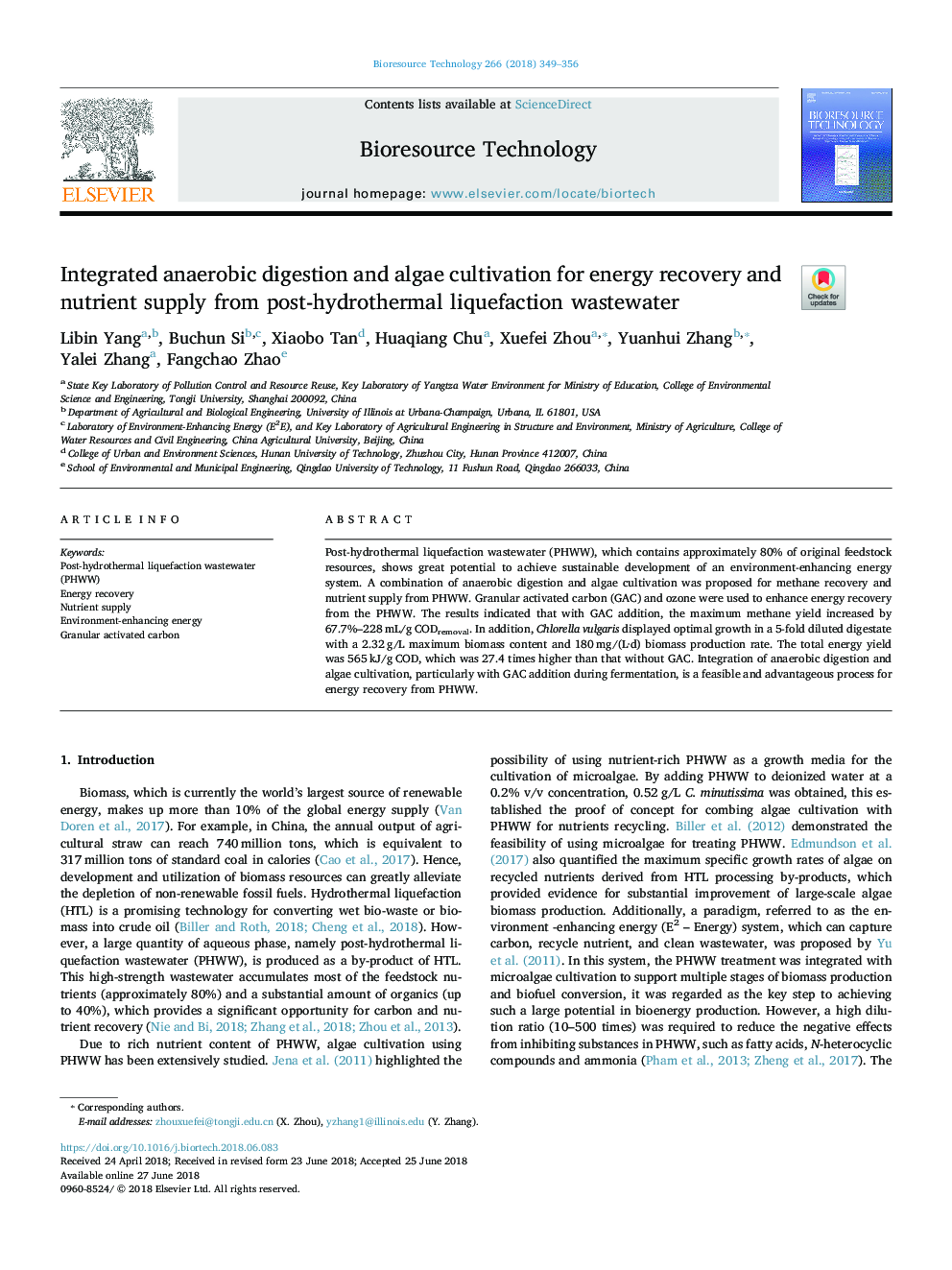| Article ID | Journal | Published Year | Pages | File Type |
|---|---|---|---|---|
| 7065986 | Bioresource Technology | 2018 | 8 Pages |
Abstract
Post-hydrothermal liquefaction wastewater (PHWW), which contains approximately 80% of original feedstock resources, shows great potential to achieve sustainable development of an environment-enhancing energy system. A combination of anaerobic digestion and algae cultivation was proposed for methane recovery and nutrient supply from PHWW. Granular activated carbon (GAC) and ozone were used to enhance energy recovery from the PHWW. The results indicated that with GAC addition, the maximum methane yield increased by 67.7%-228â¯mL/gâ¯CODremoval. In addition, Chlorella vulgaris displayed optimal growth in a 5-fold diluted digestate with a 2.32â¯g/L maximum biomass content and 180â¯mg/(L·d) biomass production rate. The total energy yield was 565â¯kJ/gâ¯COD, which was 27.4 times higher than that without GAC. Integration of anaerobic digestion and algae cultivation, particularly with GAC addition during fermentation, is a feasible and advantageous process for energy recovery from PHWW.
Related Topics
Physical Sciences and Engineering
Chemical Engineering
Process Chemistry and Technology
Authors
Libin Yang, Buchun Si, Xiaobo Tan, Huaqiang Chu, Xuefei Zhou, Yuanhui Zhang, Yalei Zhang, Fangchao Zhao,
